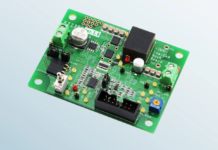
Satellite manufacturers competing in the “New Space” arena are tasked with providing solutions that will enable a 20X increase in internet bandwidth over the next 10 years. The challenges to designing, developing, and launching satellites to meet this demand are enormous. One major hurdle is the dueling requirements for shrinking satellite size while concurrently improving throughput. One of the most difficult problems to solve is powering advanced, high-current communications ASICs. To achieve this leap in throughput demand, satellite power designers must deliver 20X-30X more current to the load than legacy systems can provide, while simultaneously reducing the size, weight, and cost of the power delivery network (PDN). These requirements will forever be at odds and will continue to escalate in the foreseeable future.
Vastly improved power density helps solve this problem for New Space low-earth-orbit (LEO) and mid-earth-orbit (MEO) satellites in the form of power modules that deliver high current for today’s AI-driven computing environments. Combined with demonstrated radiation tolerance, they are a perfect fit for the critical needs of the burgeoning LEO and MEO satellite market.
With a 100V to 0.8V solution that is five times more power-dense than the next best competitor, and an efficiency that provides up to a 50 percent reduction in power losses, this new generation of PDNs provides unparalleled capability for developers of satellite communication systems who need to reduce size, weight, and cost to meet stringent mission requirements.


















